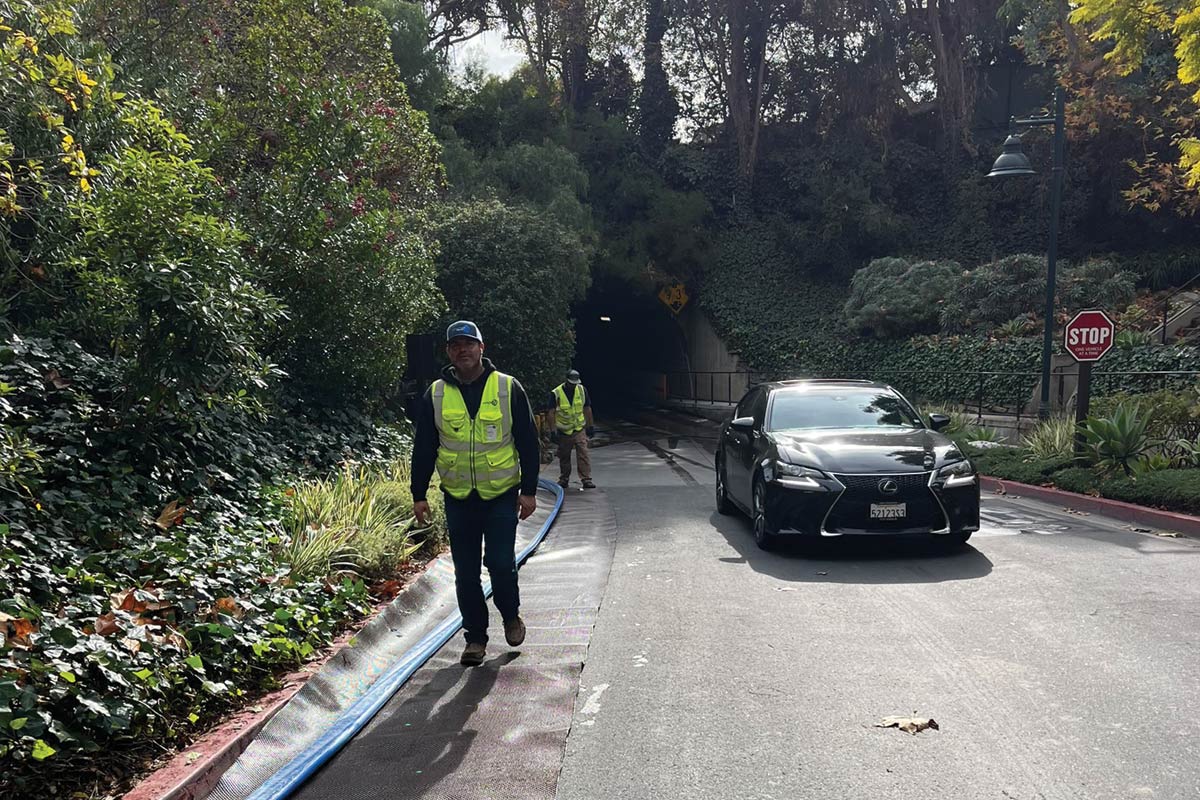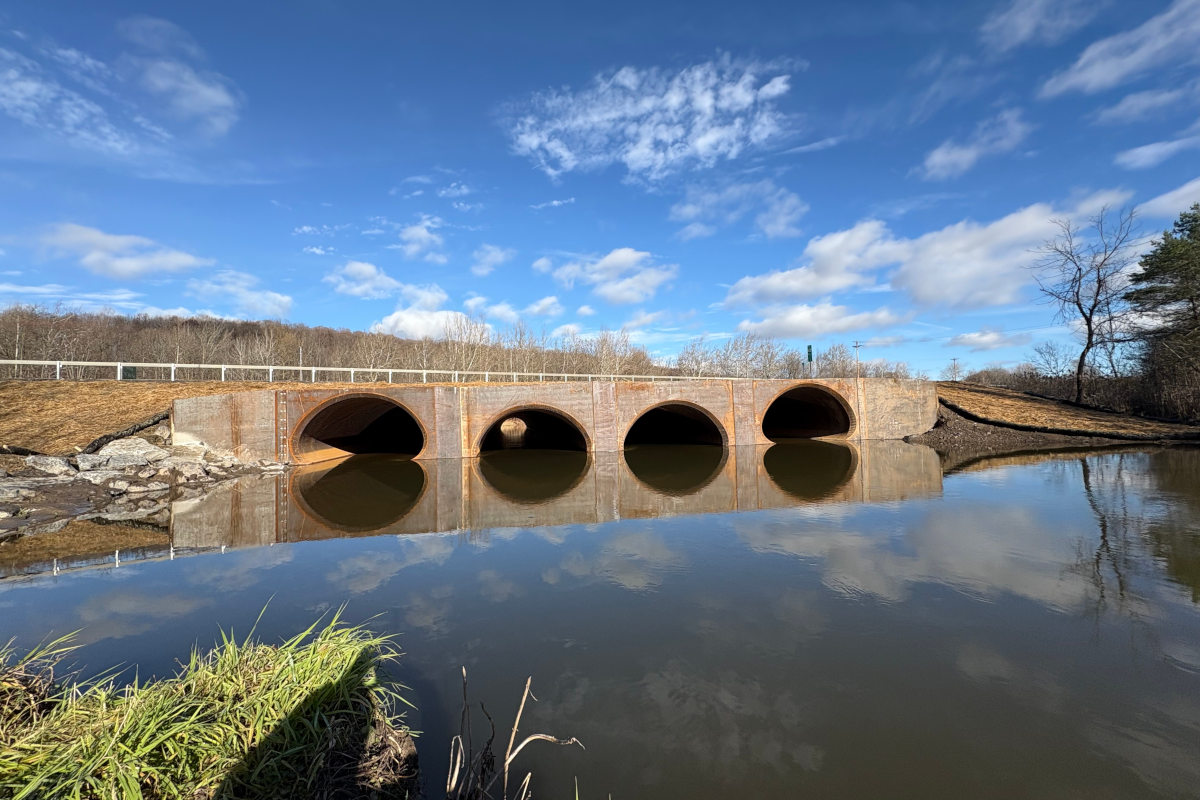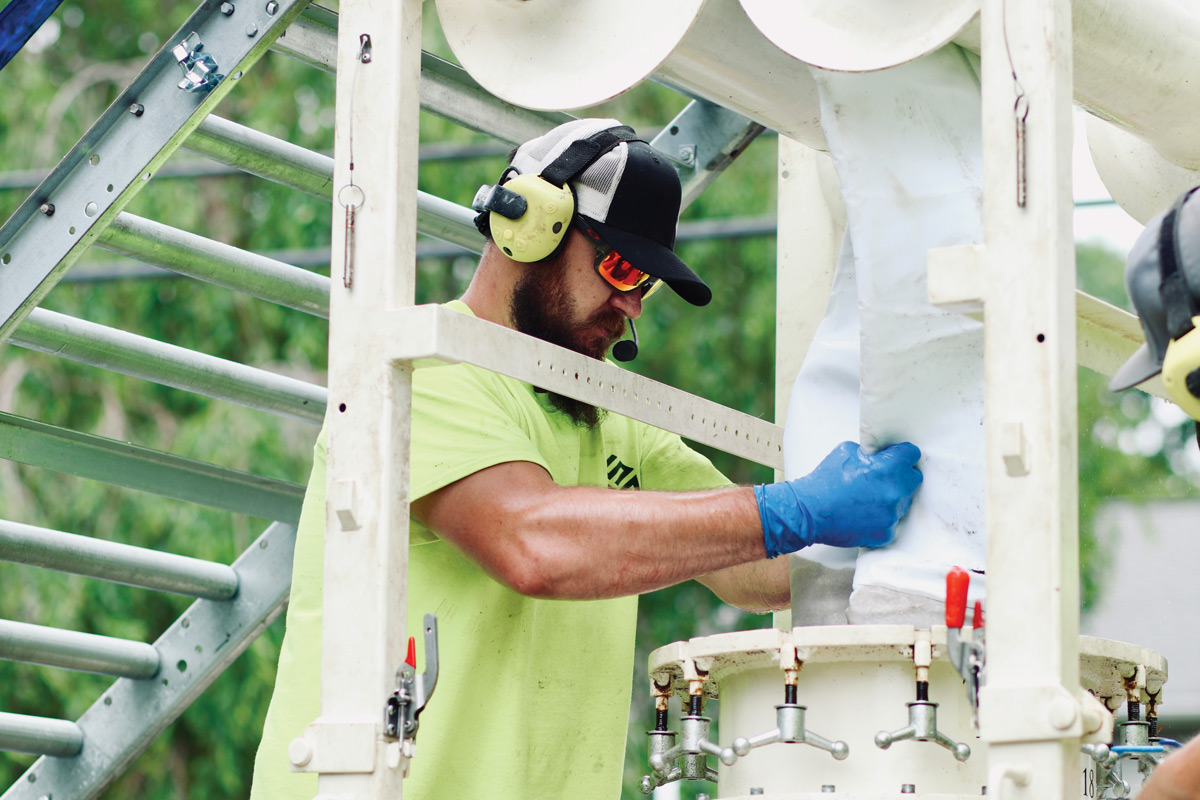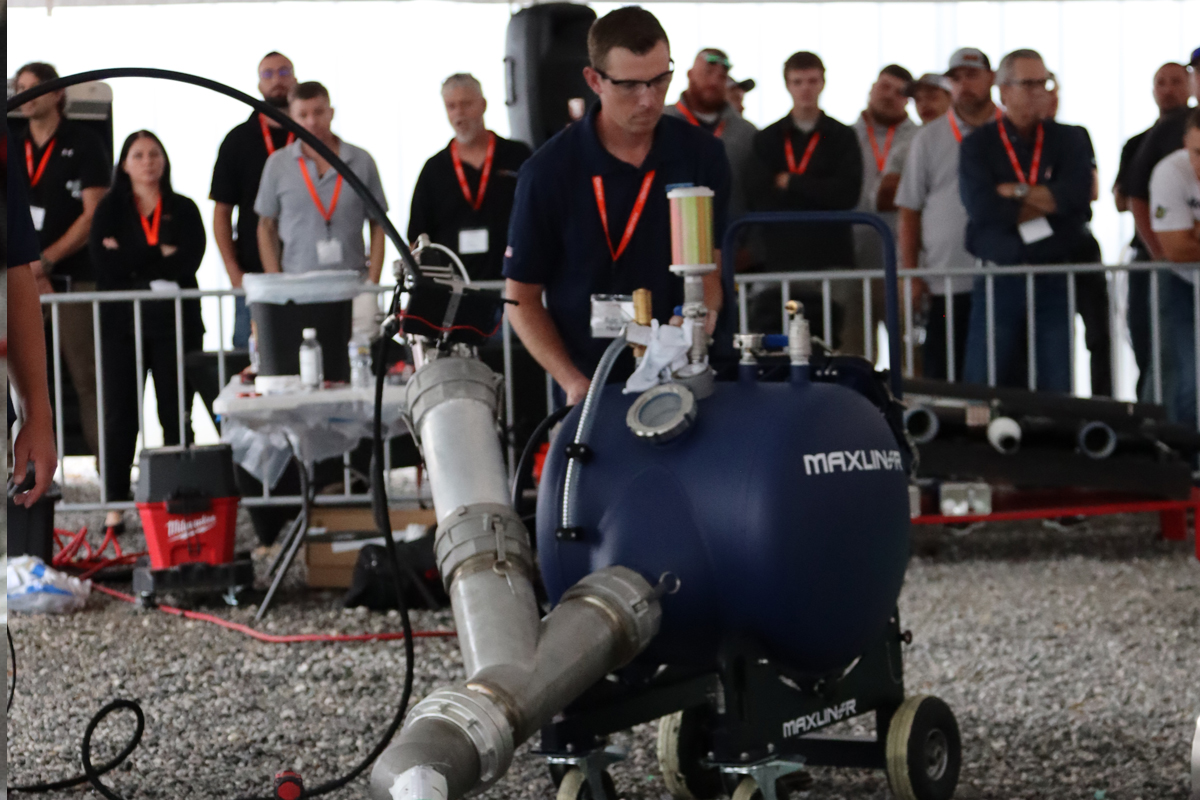
The Challenge of Rehabbing a Twin Culvert Structure in Chesapeake, Ohio
Who knew the weather situation on any given day in Pittsburgh, Pennsylvania, would have such an impact on a culvert rehab project, some four hours away in Ohio?
But that’s what happened when Capitol Tunneling, Columbus, Ohio, took on sliplining twin 14-ft diameter multi-plate culverts located in the back waters of the Ohio River in Chesapeake, Ohio.
The project site was approximately 1,500 ft from the Ohio River, which meant if the river rose to any significance, crews were forced to stop. “They are fairly deep culverts,” says Capitol Tunneling project manager Matt Jutte. “Any time we had rain (at the site) or if it rained in Pittsburgh, we had water problems. It might have been a sunny and 75-degree day on the jobsite, but the water would start to come up because it had rained in Pittsburgh, dumping it into the Ohio River, causing the water to rise.”
Just an added challenge to an already challenging project, Jutte says.
Project History
In recent years, the Ohio Department of Transportation (ODOT) has made a concerted effort to address the aging and deteriorating condition of the state’s culvert structures. Over the last five years or so, ODOT has inspected and targeted many of its larger culverts for repair due to current conditions or potential future issues. The Chesapeake project is one such culvert, Jutte says.
RELATED: Contech Engineered Solutions Offers More Than Trenchless Pipe Products
The condition of the 60-plus-year-old, round twin culverts wasn’t “horrible,” Jutte says, but their condition did need addressed to prevent future issues. The tributary area was 7.62 square miles but the terrain was fairly dramatic, with a lot of hills.
“There was damage in the inverts at the bottom quarter of the culverts. Some areas had rusted through. In its inspection, ODOT believed if it didn’t catch it now, there was the potential for future failure,” Jutte explains.
The ODOT bid proposal was set up to accept two methods of rehabilitation: 1) slipline the existing culverts with a smooth wall 150-in. steel casing and grout the annulus between the liner and host pipe or 2) use a spray-applied structural liner. Capitol Tunneling’s slipline option was accepted as the lowest bid.
Once awarded the project, Capitol Tunneling teamed with engineering firm E.L. Robinson and Contech Engineering Solutions to offer a Value Engineering Proposal (VEP) to ODOT to construct the new liner using alternate materials and installation methods. Capitol Tunneling wanted to rehab the culvert structure with Contech 13-ft diameter segmental liner plates instead of steel casings. The key reasons were logistics and cost.
“Because of the size of the steel casing — 12 ft, 6 in. in diameter — the logistics of getting that size casing shipped from out of state was a monumental task,” he says, noting that would add to the project’s cost. “By using the liner plate, transportation and installation logistics of shipping, lifting, setting, welding and pushing the 320,000-lb string of steel casing was replaced with the erection of the segmental tunnel liner plates.”
After a lengthy review of the VEP, ODOT accepted the proposal, guaranteeing ODOT a savings of $76,795 on the project.
Using the segmental liner plates was much more labor intensive, but the from an equipment standpoint, they need a smaller footprint.

The project site was approximately 1,500 ft from the Ohio River, which meant if the river rose to any significance, crews were forced to stop.
Getting Started
The work was heavily dependent on the regional rainfall as these culverts were in the back waters of the Ohio River, where water levels can — and did — fluctuate 20 ft from any given storm event. Capitol Tunneling crews mobilized to the site and began the time-intensive task of constructing access road/ramps to traverse the hilly terrain, allowing crews access to the inlet ends of the culverts. Authorization was needed from a private landowner to construct the access roads.
There was a 70 ft elevation change from the top of the hill, which was serving as the staging area, to the bottom of the culvert. “They were fairly deep culverts with pretty high fill on top of it,” Jutte says. “Definitely a challenge getting down to it.”
RELATED: Trenchless Under I-70: ODOT Project Calls for UV Liner
Once access was established, crews could then clear out the culverts of years-accumulated debris and sentiment — no small task. Cofferdams were built on the inlet and outlet sides we crews could isolate one culvert from the other in order to maintain flow. After the structure being worked on was dewatered, the process of cleaning it out started.
“I couldn’t tell you how long it had been since the structure had been cleaned out or if it had ever been cleaned. There were 500 to 600 yards of river washed material laying in the [structure], blocked by trees, as well as stumps and logs laying across the culvert,” Jutte says. “These culverts had anywhere from 4 to 6 ft of debris in the bottom of them.”
Rehabbing the Culvert
Once cleaned, installation of the new liner began on the downstream end, installing rings of liner plate toward the inlet side. The liner plate rings consisted of 10 — 2 flange segmented liner plate, blocked against the host pipe to prevent movement of the liner when the culverts flooded and to prevent floatation when the annular space was umped full of grout. From a top of the hill, approximately 600 yards of grout was pumped into the 1-ft of annular space.
This process continued for the 312 ft for each culvert. Brick and mortar bulkheads were constructed on the low ends of each culvert to seal off the annular space. Custom-formed concrete inlet cones were constructed on the inlet sides to help direct flows into the new liner.
Once completed, the process was duplicated on the second culvert.
Because of the varying weather patterns in the lower Ohio River Valley, the culverts and site were prone to flooding, causing delays during various aspects of the project. Construction initially started in late May 2016, with the bulk of the work done through October 2016. But then the river rose, flooding the culvert.
“We were gone nearly six months from the project [due to the condition of the Ohio River],” Jutte says. “The structure was completely submerged. We went back and had to clean it out again before we could continue.”
RELATED: Sliplining Twin Arch Pipes in Greece … New York
The project was finally completed in June 2017. A key benefit of using sliplining as the rehabilitation method was that it created a new culvert inside the host pipe, with room for future rehabilitation, if needed. “One of the benefits we assured ODOT of was that we were able to put in a 6-in. larger culvert than what was anticipated, which left room for future liner.
“[ODOT] wasn’t looking at this culvert’s lifecycle but the next one, as well,” Jutte says. “ODOT got a product equal to what they had requested in the bid proposals at a cost-savings.”
Sharon M. Bueno is managing editor of Trenchless Technology.




